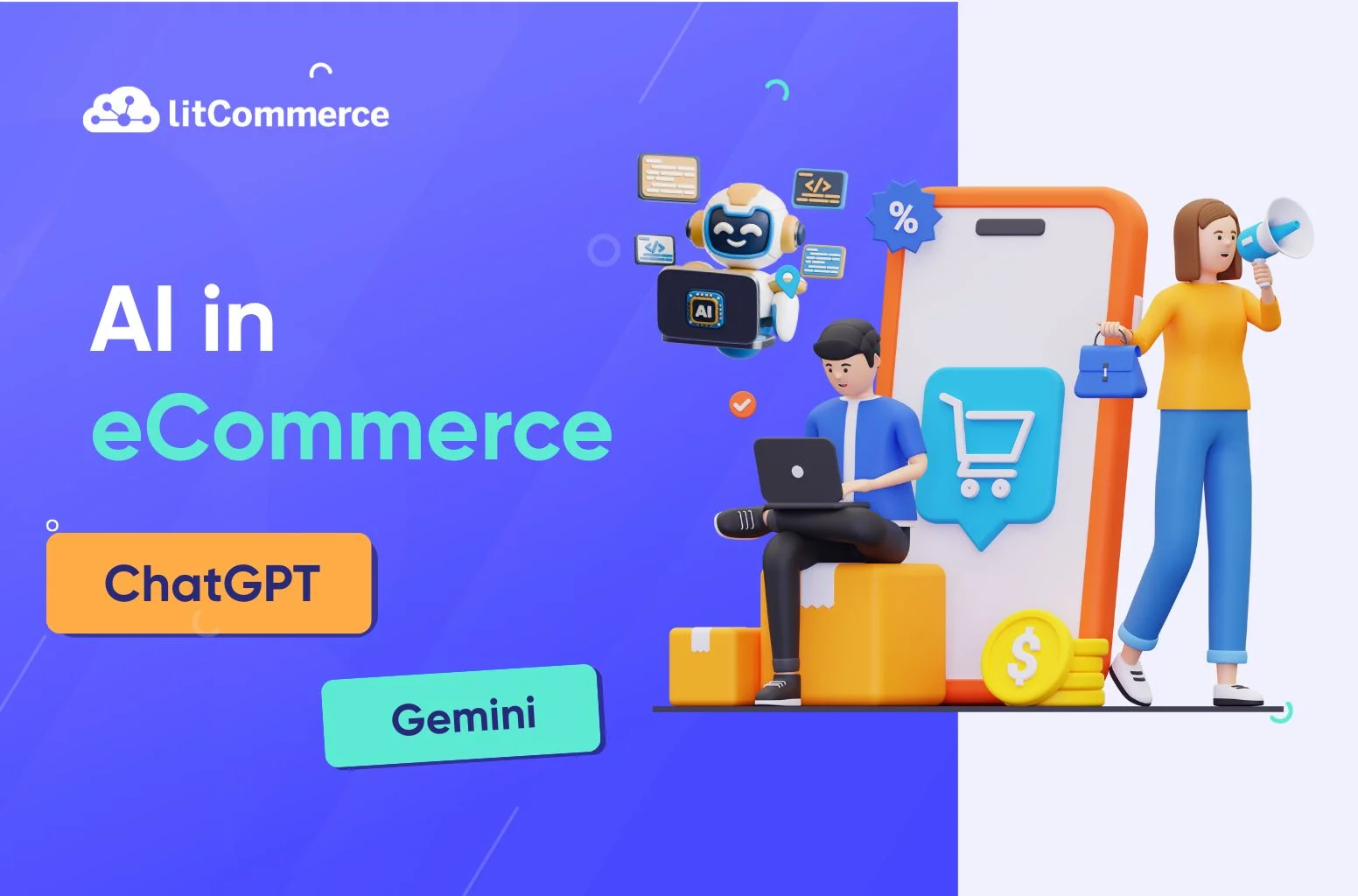In 2025, AI in eCommerce isn’t just a buzzword, it’s a strategic advantage. Whether you run a small Shopify store or manage a multichannel empire, artificial intelligence is transforming how online businesses attract, convert, and retain customers.
From real-time product recommendations to 24/7 AI customer support and dynamic pricing, today’s tools do far more than automate tasks, they help you make smarter decisions, faster. The numbers speak for themselves: AI-powered eCommerce platforms report up to 30% higher conversion rates, 40% lower customer service costs, and 60% faster order fulfillment when integrated correctly.
What’s changed? Thanks to recent breakthroughs in machine learning, generative AI, and natural language processing (NLP), even small and mid-sized eCommerce stores can now access technology that was once reserved for tech giants. Tools like ChatGPT, intelligent chatbots, AI image generators, and smart logistics platforms are becoming plug-and-play solutions across marketplaces like Shopify, Amazon, WooCommerce, and Temu.
This blog post explores the top 10 use cases of AI in eCommerce, the key benefits, and the technologies behind them, plus actionable tips on how to adopt AI successfully for your online store.
Let’s dive into how AI is reshaping the future of eCommerce, and how your business can stay ahead.
How AI is Changing the eCommerce Industry
Artificial intelligence is revolutionizing every stage of the eCommerce journey—from product discovery to post-purchase engagement. What used to require manual work and guesswork can now be automated, predicted, and personalized with precision.
In the past, online stores relied on static content, broad campaigns, and delayed insights. Today, AI enables real-time decision-making and hyper-personalization. For example, AI can analyze a shopper’s behavior in milliseconds and instantly suggest the right product, adjust the price dynamically, or trigger a chatbot conversation tailored to that user’s intent.
This transformation is visible in multiple areas:
- Marketing. Smarter segmentation and predictive targeting help businesses reach the right customer at the right time with the right message.
- Operations. AI systems can monitor inventory levels, predict demand spikes, and optimize shipping routes without human input.
- Customer experience. With natural language understanding, AI chatbots provide round-the-clock support while learning from every interaction.
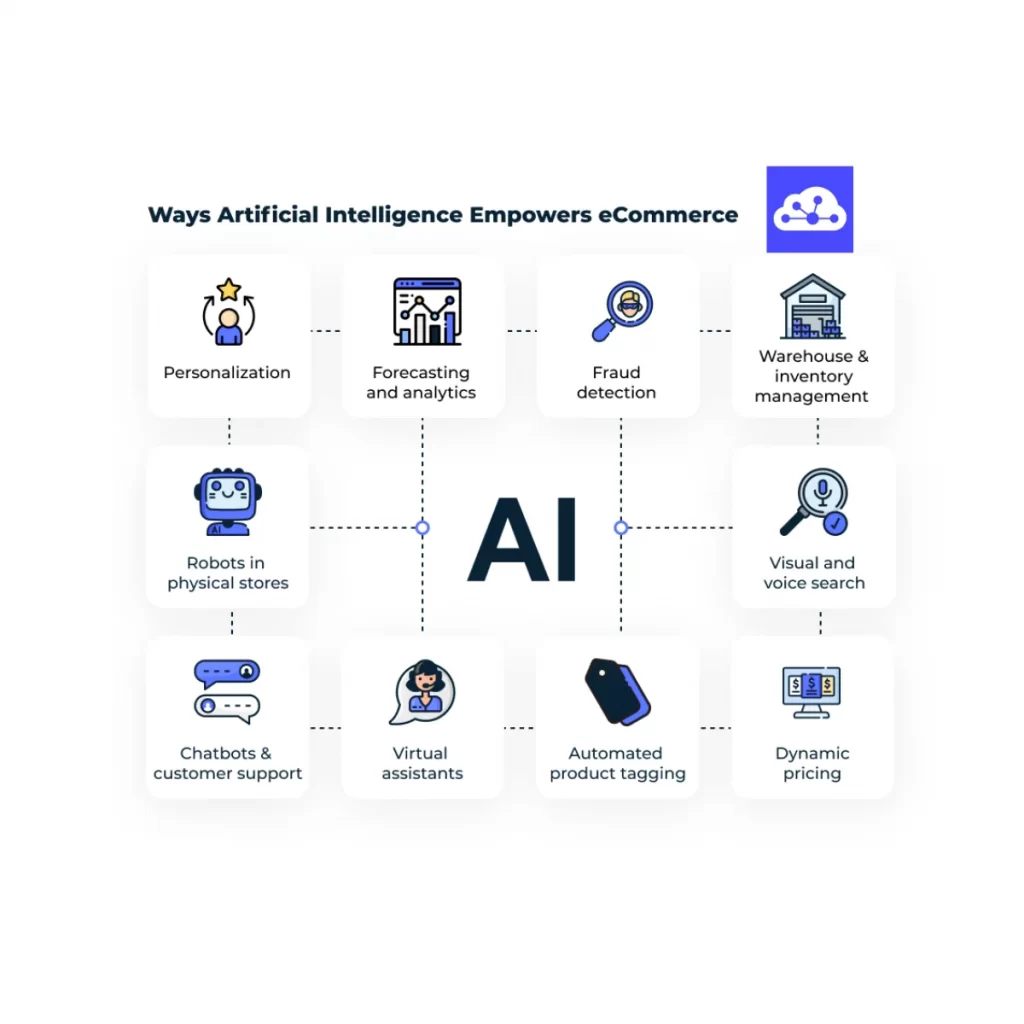
In short, AI is not just supporting eCommerce—it’s fundamentally changing how digital retail operates. Businesses that adopt AI today are setting themselves up to scale faster, respond smarter, and win bigger in the highly competitive online marketplace.
Check our guide on Build Smarter, Sell Faster with ChatGPT AI Agents.
Key Benefits of AI in eCommerce Businesses
AI offers game-changing advantages for online retailers by automating operations, personalizing experiences, reducing costs, and improving decision-making. Let’s explore how these benefits translate into real growth for your store:
1. Hyper-personalized shopping experiences
AI delivers real-time, highly targeted product recommendations based on browsing behavior, purchase history, and customer preferences. This personalization drives more meaningful shopping journeys, and can increase revenue by up to 300% and conversion rates by 150%, according to recent studies. Brands like Amazon and Sephora have seen massive success with AI-driven personalization, with Sephora reporting an 11% boost in conversions and 30% more engagement.

2. Smarter marketing and targeted advertising
AI tools help segment your audience more accurately, automate ad campaigns, and tailor offers to individual users. These systems use real-time data to optimize when and where your ads appear, leading to higher click-through rates and lower cost-per-acquisition. For example, The North Face used AI to serve smarter recommendations and saw a 60% increase in click-through rates.
3. Seamless automation across operations
From inventory and order fulfillment to product categorization and customer emails, AI takes over repetitive tasks, giving your team time to focus on strategy. AI-driven automation leads to 30% lower operational costs and 8% average cost savings through smarter workflows. It also improves fulfillment speed, helping you meet growing customer expectations.
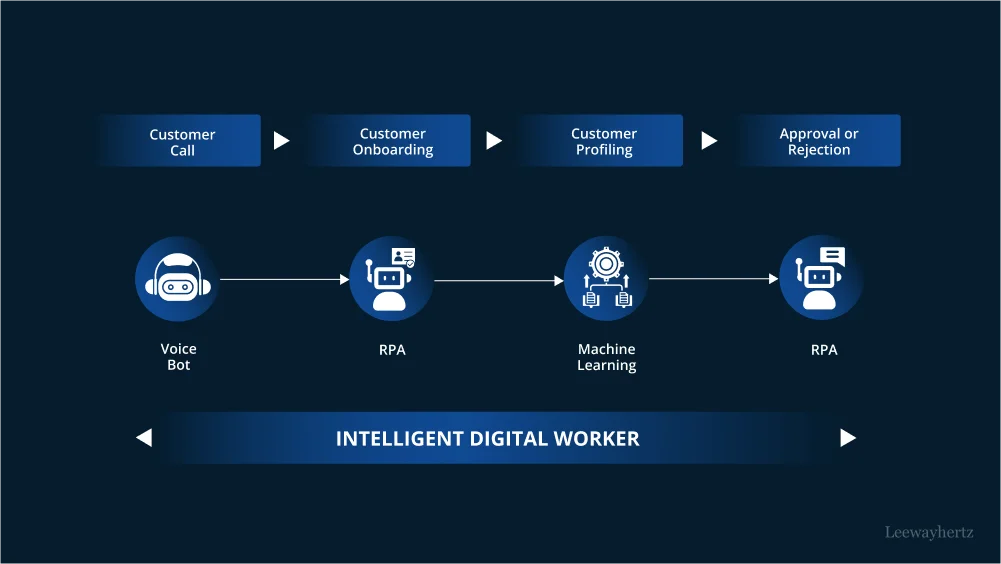
4. Better customer segmentation and analytics
AI enables smarter data analysis by identifying hidden trends in your customer base. You can build more precise segments like first-time buyers, loyal VIPs, or cart abandoners, and tailor your outreach accordingly. With predictive analytics, AI helps forecast what your customers want before they ask, leading to better engagement and retention.
5. Enhanced customer service and engagement
AI-powered chatbots offer 24/7 instant support, solving simple issues, processing returns, or helping customers find products faster. These tools now understand tone, intent, and even sentiment, delivering helpful, human-like interactions. Studies show 73% of customers prefer AI support for quick questions, and this leads to a 10–15% increase in customer retention.
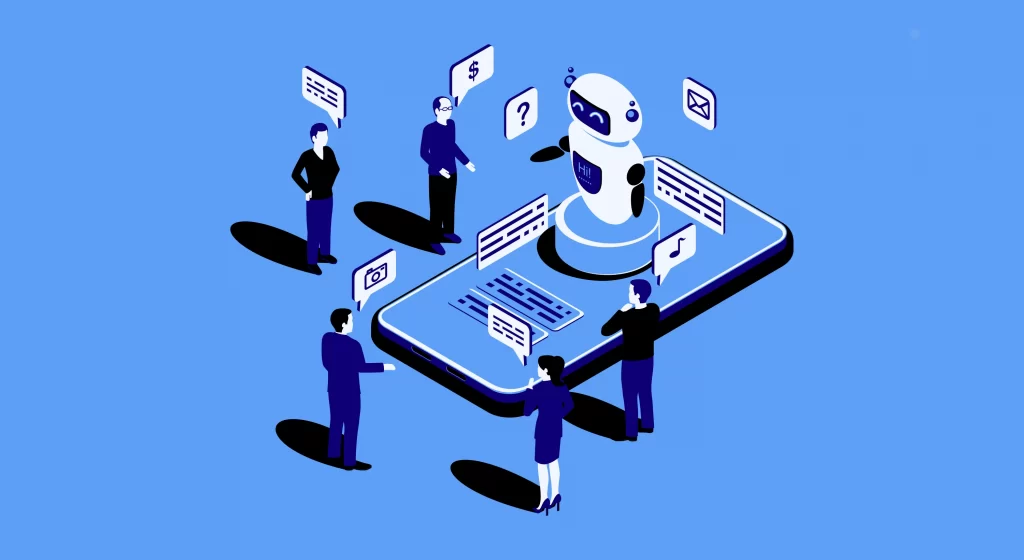
6. Faster and more accurate demand forecasting
AI models analyze real-time sales data, seasonality, and even outside trends like weather or holidays to predict demand spikes. This leads to better planning and stock optimization. AI-driven demand forecasting has been shown to reduce stockouts by 65% and cut inventory levels by 20% without hurting service levels.
7. Streamlined order fulfillment and inventory control
AI enhances your supply chain by syncing with logistics platforms to optimize picking, packing, shipping, and returns. It helps you avoid overstocking or understocking and ensures that high-demand items are always available. This not only speeds up delivery but also reduces warehouse costs.

8. Reduced operational costs and manual work
By automating backend operations and customer-facing tasks, AI cuts down on labor costs and eliminates inefficiencies. Retailers using AI report lower expenses across fulfillment, inventory, and support, with 94% seeing cost savings in at least one area. It also scales easily—helping you grow without increasing headcount proportionally.
9. Improved fraud detection and data security
AI monitors real-time transaction patterns and instantly flags suspicious activity. This reduces fraudulent chargebacks and protects your business from revenue loss. With deep learning, AI systems can adapt to new threats, staying one step ahead of fraudsters.
10. Increased revenue through conversion optimization
AI tools automatically test variations of product pages, CTAs, and checkout flows to see what converts best. With continuous learning, these tools adapt to what works for your audience, improving performance without manual A/B testing. Retailers using AI-driven CRO (conversion rate optimization) report an average 20% revenue increase.
You may also like: Boost Your Store’s Traffic and Rankings with ChatGPT.
5 Types of AI Technologies Powering eCommerce
Behind every smart eCommerce feature, whether it’s a chatbot, product recommendation, or dynamic pricing engine, is a powerful set of AI technologies. These aren’t just buzzwords; they’re the building blocks that enable automation, personalization, and real-time decision-making.
Here are the five core types of AI technologies transforming eCommerce in 2025:
1. Natural Language Processing (NLP)
NLP enables machines to understand, interpret, and generate human language. In eCommerce, it’s the technology behind AI chatbots, voice assistants, and smart search bars. It powers features like auto-complete, voice commerce, sentiment analysis in reviews, and conversational shopping experiences.
For example, customers can now type or say “red running shoes under $100,” and NLP systems can instantly understand and deliver relevant products.
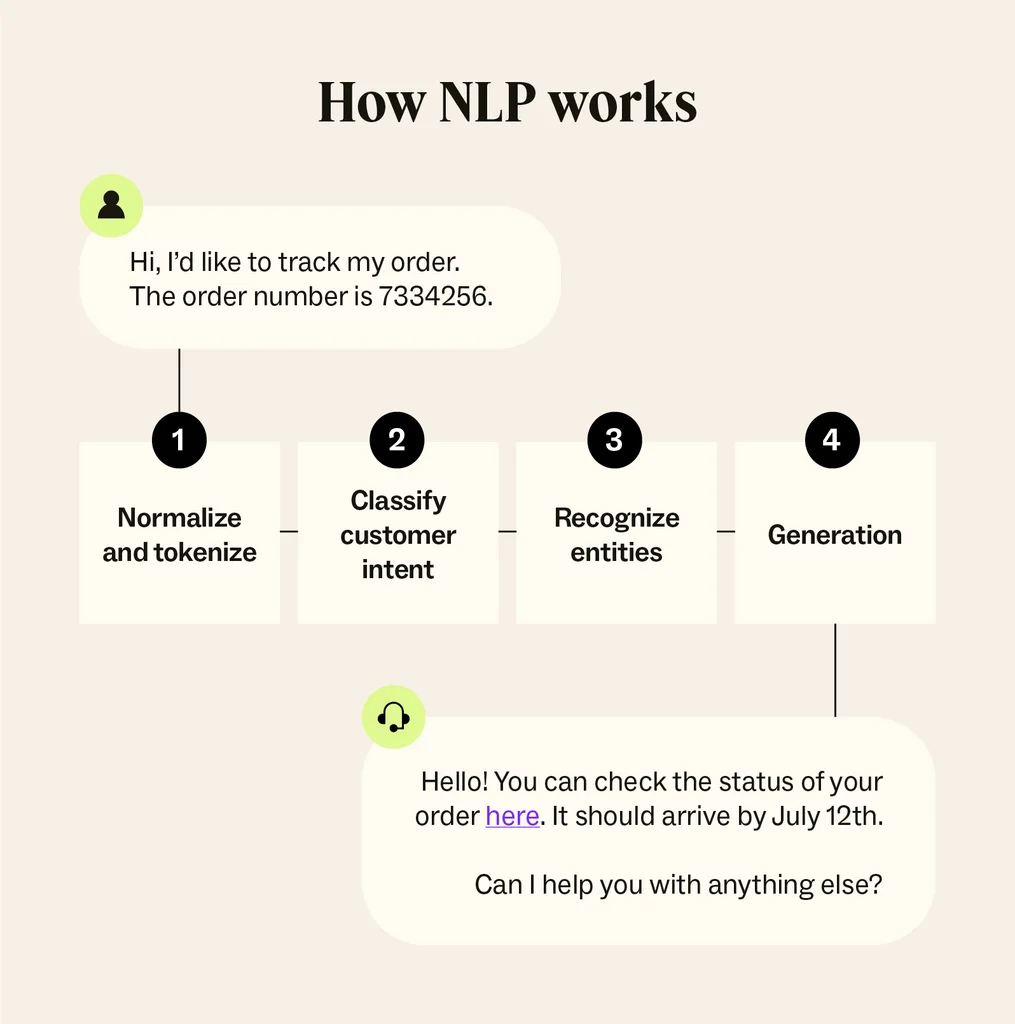
2. Generative AI
Generative AI—like ChatGPT and AI image or video generators is revolutionizing content creation for eCommerce. From writing product descriptions and ad copy to generating realistic product mockups or even virtual try-ons, this tech saves time and boosts creativity.
Many stores now use tools like ChatGPT to scale their marketing content, FAQs, and customer support scripts in minutes.
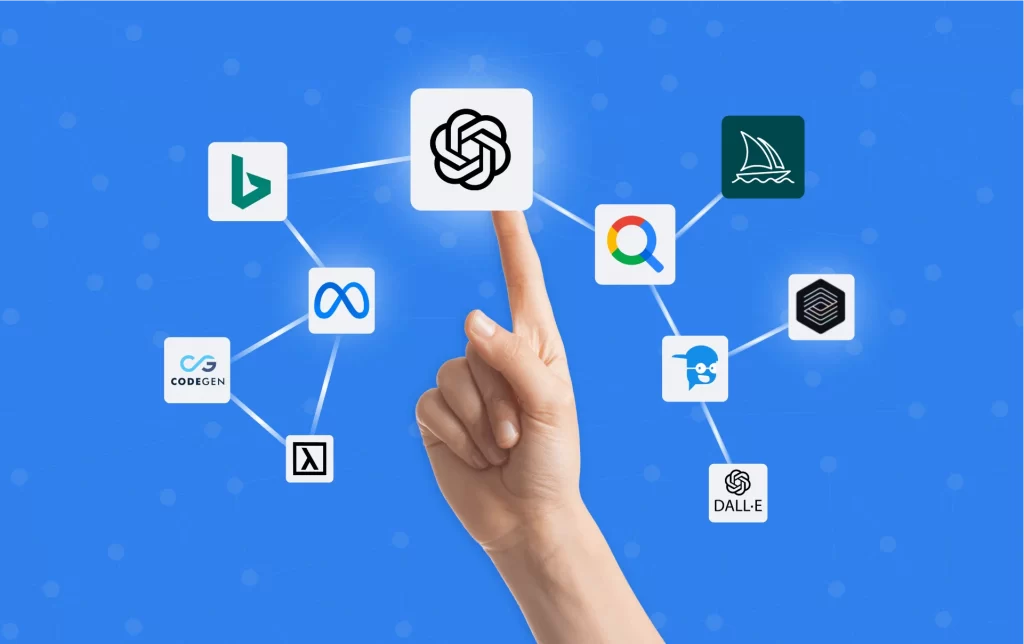
3. Machine learning (ML)
Machine learning is the backbone of AI in eCommerce. It helps systems learn from customer behavior, transaction data, and performance metrics to continuously improve over time. ML powers everything from recommendation engines and fraud detection to predictive analytics and customer segmentation.
It’s how platforms like Amazon seem to “know” what you want before you do.
4. Deep learning
A more advanced form of machine learning, deep learning, uses layered neural networks to process large and complex data sets, like images, voice, and unstructured text. Deep learning enables facial recognition for personalized experiences, visual search tools, and advanced fraud detection that can adapt to new threats in real time.
Retailers use it to enhance product search accuracy and even automate image tagging or categorization.
5. APIs and composable architectures
Modern eCommerce is moving toward composable commerce, where stores can plug in best-of-breed AI tools through APIs (Application Programming Interfaces). This flexibility allows businesses to adopt AI features without overhauling their entire tech stack.
Whether you’re using Shopify, BigCommerce, or a custom headless setup, APIs make it easy to integrate AI tools for pricing, fulfillment, personalization, and more.
Read more: 100 ChatGPT Business Prompt.
10 Popular AI Use Cases in eCommerce
AI tools are no longer limited to big tech companies—they’re now accessible and practical for businesses of all sizes. Below are ten real-world AI applications that can help you improve your eCommerce store, along with clear tips on how to get started.
Use case 1: Personalized product recommendations
AI can study your customers’ browsing history, items they’ve clicked on, and past purchases to recommend products they’re likely to buy. These suggestions show up on homepages, product pages, cart pages, and even in emails.
How to use it:
- Use tools like Shopify Magic, Nosto, or Algolia Recommend.
- Integrate with your existing product catalog.
- Test placements (homepage vs. checkout) to see what converts best.

Pro tip: Personalization works best when paired with clean product data and rich descriptions.
Use case 2: Dynamic pricing and discount optimization
Instead of setting static prices, AI adjusts prices based on demand, competitor pricing, customer behavior, and inventory levels. It can also trigger limited-time offers to encourage checkout.
How to use it:
- Try tools like Prisync, Wiser, or DynamicPricing AI.
- Set pricing rules (e.g., always stay 5% below your top competitor).
- Use A/B tests to track revenue impact.
Pro tip: Don’t change prices too frequently—test thresholds and maintain trust.
Use case 3: AI-powered product listings
Writing product titles, descriptions, and tags manually can be exhausting. AI tools can generate optimized content for each listing and help you improve SEO with the right keywords.
How to use it:
- Use ChatGPT, CopyMonkey, or Jasper AI to create content.
- Feed in your product specs and audience preferences.
- Edit the output to match your brand voice.

Pro tip: Use AI to generate content variations for A/B testing on product pages.
Use case 4: Cross-selling and upselling using AI logic
AI identifies patterns in customer behavior and suggests add-ons or upgrades during the shopping journey. This boosts average order value without being too salesy.
How to use it:
- Set up a tool like ReConvert, Frequently Bought Together (Shopify app), or Bold Upsell.
- Recommend items on product pages or in the cart.
- Customize based on order history and product compatibility.
Pro tip: Make upsells relevant, not random—bundle items that naturally go together.
Use case 5: Intelligent chatbots and 24/7 support
AI-powered chatbots answer questions, help with orders, and even guide users to the right products—all without needing a live agent.
How to use it:
- Use tools like Tidio, Gorgias, Zendesk AI, or ManyChat.
- Program common questions and train the bot to improve responses over time.
- Make hand-off to human agents easy for complex issues.
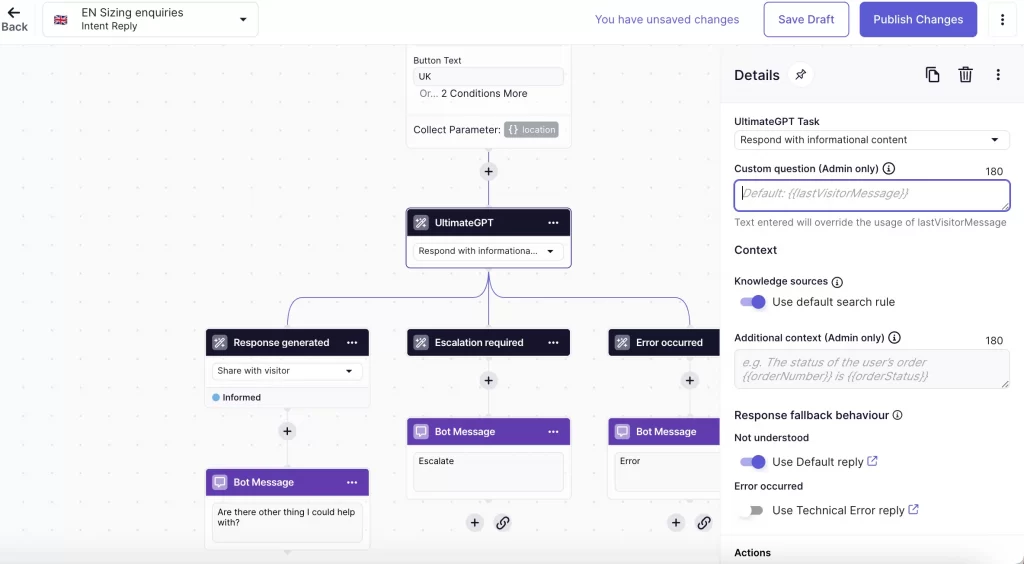
Pro tip: Start with a few key flows (shipping, returns, product questions) and expand as needed.
Use case 6: Visual and voice commerce assistants
Customers can now search with images or voice—perfect for mobile users. Visual search tools find products that match a photo, while voice tools respond to spoken queries.
How to use it:
- For visual search, try Syte, Pinterest Lens, or Google Cloud Vision.
- For voice commerce, explore integrations with Alexa Shopping, Google Assistant, or Shopify’s voice search apps.
- Optimize product images and metadata to support visual search accuracy.
Pro tip: Keep file names and alt text clean and descriptive to support these tools.
Check our guide on AI Tools For Faster Video Creation.
Use case 7: Order orchestration and logistics optimization
AI improves how orders are routed and fulfilled by analyzing warehouse locations, shipping partners, and delivery timelines.
How to use it:
- Use platforms like ShipBob, Zentail, or Flexe that offer smart fulfillment.
- Automate order routing based on proximity and stock levels.
- Monitor KPIs like delivery time, cost per order, and fulfillment accuracy.
Pro tip: Use AI to reduce split shipments—they’re expensive and bad for customer experience.
Use case 8: Agentic commerce and checkout
This is a newer AI use case where the system takes over certain parts of the decision-making process for the shopper—like choosing the best bundle, remembering sizing, or autofilling checkout fields.
How to use it:
- Leverage tools like Shopify Magic, Builder.io, or AI-powered forms.
- Train your AI agent based on repeat customer behavior.
- Offer opt-in options for a more “smart” checkout experience.
Pro tip: Keep the user in control. Always allow manual override.
Use case 9: Predictive analytics for stock, trends, and customer behavior
AI helps you forecast what products will be in demand, which customers are at risk of churning, and when to run specific promotions.
How to use it:
- Platforms like Inventory Planner, Retina AI, or Google Analytics + BigQuery can help.
- Sync sales data and marketing data for better accuracy.
- Build dashboards to visualize trends and take action.
Pro tip: Set alerts for early signals of low stock or sudden traffic surges.
Use case 10: GEO (Generative engine optimization)
With AI-powered search engines like ChatGPT or Google SGE (Search Generative Experience) becoming more popular, you need to optimize content for conversational queries.
How to use it:
- Use ChatGPT to generate FAQs and conversational product copy.
- Create structured data and answer-based content (“What’s the best yoga mat for beginners?”).
- Optimize for featured snippets and product-rich results.
Pro tip: Focus on real questions your audience is asking. Use tools like AnswerThePublic or Google’s People Also Ask.
How to Use AI in eCommerce Business
Now that you’ve seen how AI can help, the next step is knowing how to use it effectively in your store. The key is not to jump into every AI tool at once—but to start with a clear strategy, test smartly, and build up over time. Here’s a step-by-step guide to help you get started:
1. Create a clear AI strategy
Before investing in any tool, take time to define your goals. Do you want to boost sales? Cut support costs? Improve inventory management? AI is most effective when tied to a business outcome.
What to do:
- Write down your top 3 pain points or opportunities.
- Match each one with a potential AI solution.
- Decide on success metrics (e.g. increase conversion rate by 15%).
Tip: Don’t start with tech—start with the problem you want to solve.
2. Find narrow, high-impact use cases first
Instead of overhauling your entire store, pick one use case where AI can make an immediate difference—like product recommendations, chat support, or email personalization.
What to do:
- Choose a tool with an easy setup (many offer 1-click integrations).
- Test it on a specific product line or campaign.
- Measure results before scaling across your site.
Tip: Start small, win fast, and reinvest based on what works.
3. Align with business and customer goals
AI should support both your business objectives and your customers’ needs. Don’t automate just for the sake of it—make sure the experience feels smoother, smarter, and more helpful for users.
What to do:
- Ask: “Will this make the shopping journey better?”
- Look for tools with personalization and customization options.
- Avoid intrusive pop-ups or bots that interrupt the user flow.
Tip: Use customer feedback to refine your AI features.
4. Use third-party platforms
You don’t need to build AI tools from scratch. Most popular eCommerce platforms (like Shopify, BigCommerce, or WooCommerce) support plugins and apps with built-in AI capabilities.
What to do:
- Explore marketplaces like the Shopify App Store or BigCommerce Marketplace.
- Try tools like ChatGPT for content, Tidio for chatbots, or Prisync for pricing.
- Choose platforms with good reviews, transparent pricing, and responsive support.
Tip: Pick tools that can scale with your store as it grows.
5. Build scalable and flexible AI solutions
As your store grows, so will your needs. Choose AI tools that can handle more traffic, more products, and more customer data—without breaking.
What to do:
- Look for APIs and integrations with your existing stack.
- Choose tools with flexible pricing plans.
- Test how the AI performs under high traffic or sales peaks.
Tip: Future-proof your business with AI that adapts—not locks you in.
6. Address data quality and infrastructure needs
AI is only as good as the data you feed it. Messy product listings, inconsistent tags, or poor inventory tracking can confuse your AI and lead to bad results.
What to do:
- Clean up your product catalog and descriptions.
- Standardize tags, categories, and naming conventions.
- Use analytics tools to track performance and feed good data into your AI systems.
Tip: Invest in data hygiene first—it will make every AI tool smarter.
AI in eCommerce: Frequently Asked Questions
If you’re still on the fence about using AI in your online store, you’re not alone. Many store owners have similar questions before taking the leap. Below are clear, practical answers to the most common ones.
1. How can AI enhance personalization in eCommerce?
AI uses customer data—such as browsing history, purchase behavior, and location—to deliver personalized experiences in real time. It can recommend relevant products, offer targeted discounts, and even send customized emails based on each shopper’s behavior.
2. How does AI improve the customer experience?
AI makes the shopping journey smoother, faster, and more enjoyable. From 24/7 chatbot support to smart search and quick product recommendations, AI helps customers find what they need without friction.
3. What are the biggest challenges when adopting AI?
The most common hurdles are:
– Not knowing where to start.
– Poor data quality.
– Picking the wrong tools.
– Over-automating and harming the customer experience.
How to solve them: Start with one use case, clean your data, choose tools that match your store size, and always test before fully rolling out.
4. Can small businesses afford AI solutions?
Yes! Many AI tools are now priced for small and mid-sized businesses. Tools like ChatGPT, Shopify Magic, and Tidio offer free or affordable plans to help you get started. You don’t need a big budget or tech team—many AI solutions are plug-and-play with easy onboarding.
5. How can businesses ensure the accuracy of LLMs like ChatGPT?ing AI?
Large Language Models (LLMs) like ChatGPT are powerful, but they require:
– Clear prompts
– Regular updates
– Human oversight
Always review AI-generated content for accuracy and tone. Fine-tune prompts, provide reference data when possible, and avoid using LLMs for legally or medically sensitive topics.
Artificial Intelligence in eCommerce: Final Thoughts
AI is no longer just a futuristic concept—it’s a real, proven tool that’s helping eCommerce businesses of all sizes grow smarter, faster, and more profitably. Whether you’re looking to increase sales, streamline operations, or improve the customer experience, AI offers practical solutions that are easier to implement than ever before.
From personalized recommendations to AI-powered product listings, smart chatbots, and dynamic pricing tools, you don’t have to be a tech expert or run a massive online store to benefit. Many AI tools are plug-and-play, affordable, and scalable as your store grows.
But here’s the key: success with AI doesn’t come from using every tool at once. It comes from starting small, solving real problems, and building on what works. Use the guidance in this post to pinpoint where AI can make the biggest impact in your business—then take the first step.AI isn’t replacing store owners—it’s empowering them. It’s here to help you work smarter, delight your customers, and stay ahead in a highly competitive market.

